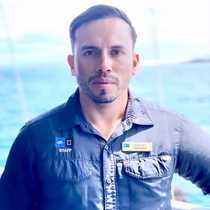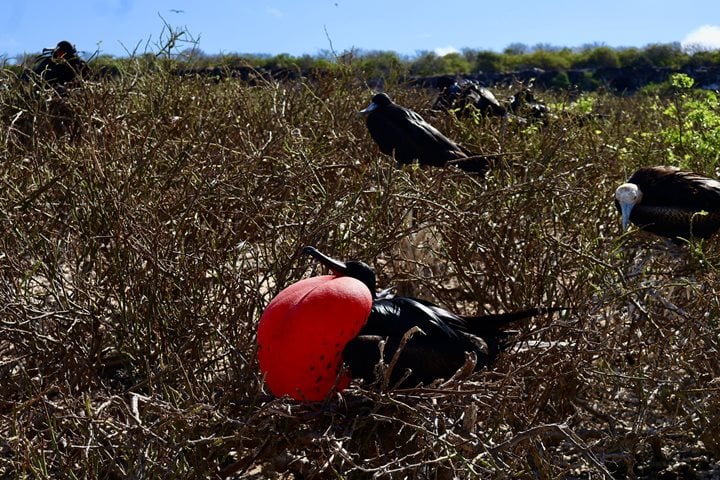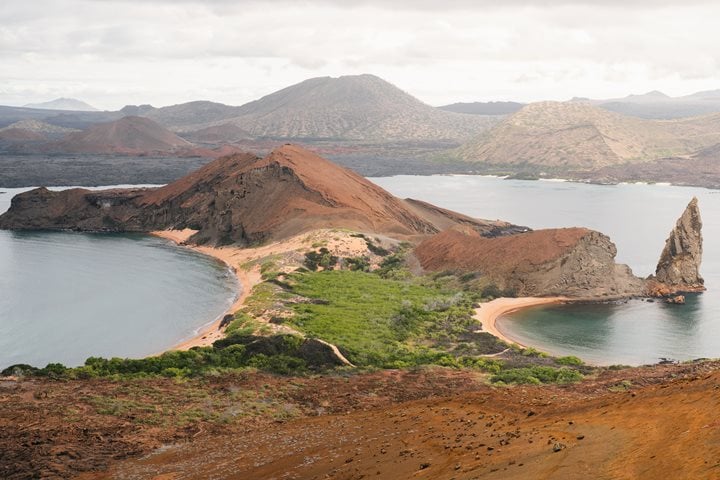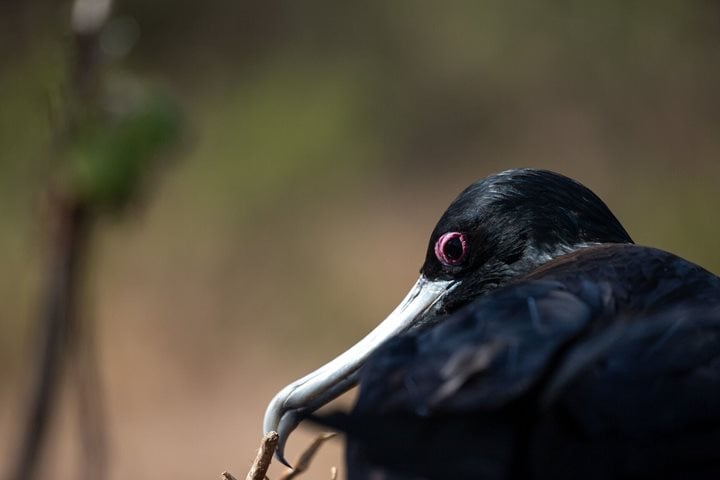We woke up early in the morning for a dry landing at Dragon Hill. This is a visitor site where land iguanas are one of the major herbivores, and the iconic species nest among the dusty terrine.
As we walked further into the trail, we spotted a few female land iguanas coming out of their burrows where they laid eggs; some males were basking under the sun, others eating pads of prickly pear cactus.
We walked through a white forest made out of incense trees covered in lichens, surrounded by shorter bushes known as Galapagos cotton. A few coastal birds were spotted at a brackish water lagoon on the way back from our morning visit.
After the hike we got suited up to snorkel at a satellite islet of Santa Cruz. A large variety of fish were seen at this snorkeling site, including a couple of white tip reef sharks and some diamond sting rays.
We came back to our mother ship to enjoy a traditional Ecuadorian lunch buffet style.
During the afternoon, some of us opted to kayak, paddle board or simply Zodiac ride along the coast of Santa Cruz, but this time the ship repositioned to a different visitor site, known as Eden. The coast had small inlets that allowed creating estuary-like environments which are perfect for offspring of marine species to develop. We spotted a couple of juvenile hammerhead sharks, a few juvenile black tip reef sharks, and many marine birds nesting on the red mangrove trees.
We finished our day by navigating around Daphne Islet and learning about the important research done on the Darwin finches by a couple of British scientists who proved evolution was happening within short generations of these endemic birds.
A beautiful sunset came with great satisfaction of completing one more day of exploration around the enchanted archipelago with Lindblad Expeditions and National Geographic.







